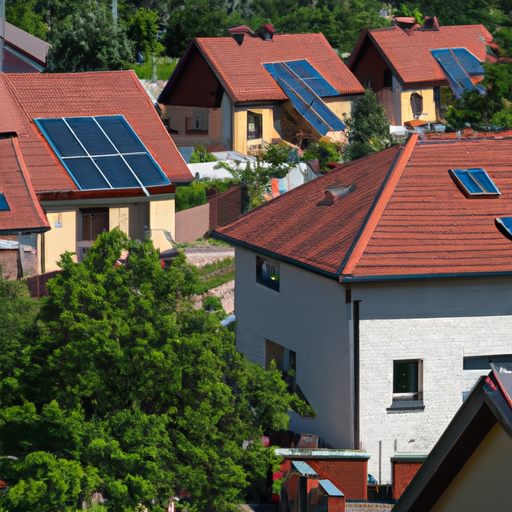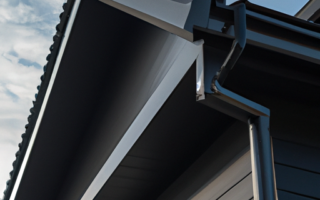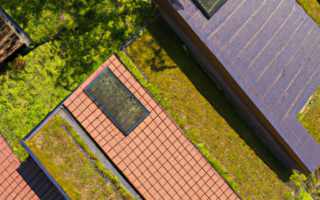Introduction to Roof Construction: Understanding the Basics
Introduction to Roof Construction: Understanding the Basics
Roof construction is a crucial aspect of any building project, as it provides protection against external elements and ensures the safety and comfort of those inhabiting the space. Understanding the basics of roof construction is essential for homeowners, architects, and construction professionals alike.
There are various types of roof construction methods, each with its own advantages and disadvantages. Here, we will explore some of the most common types.
1. Pitched Roof Construction:
Pitched roofs are the traditional style found in many residential homes. They have two or more slopes that meet at a central point called the ridge. This type of roof construction allows for efficient rainwater drainage and provides extra attic space. It also offers better ventilation and insulation capabilities.
2. Flat Roof Construction:
Flat roofs are typically seen in commercial and industrial buildings. They have a slight slope to allow for water runoff. Flat roofs offer a cost-effective and space-efficient design, making them suitable for areas where horizontal space is limited. However, proper waterproofing and maintenance are essential to prevent water leakage.
3. Mansard/Roofing Style Construction:
The Mansard style roof construction consists of four sloping sides, usually with a steeper lower slope and a flatter upper slope. This type of roof design allows for additional living space or storage in the attic, making it popular in residential buildings. However, it can be more expensive due to the increased complexities involved in its construction.
4. Hip Roof Construction:
Hip roofs have slopes on all four sides, meeting at a ridge or a flat apex. This design offers excellent stability and is suitable for areas with high winds or heavy snowfall. Hip roofs also provide more attic space and can be combined with other roof styles for added visual interest.
5. Gambrel Roof Construction:
Gambrel roofs have two slopes on each side, creating a distinctive barn-like appearance. This design allows for maximum headroom and storage space in the attic. Gambrel roofs are commonly used in residential and agricultural buildings.
6. Shed Roof Construction:
Shed roofs are simple and cost-effective. They have a single sloping plane, typically used for smaller structures like sheds or extensions. Shed roofs are easy to construct and offer efficient water drainage.
Understanding the basics of roof construction is the first step in making informed decisions about the most suitable roofing design for your needs. Factors such as climate, budget, architectural style, and personal preferences play a significant role in determining the ideal roof construction method.
In subsequent articles, we will delve deeper into each type of roof construction, discussing their pros and cons, materials commonly used, and their suitability for different architectural styles and environments. Stay tuned to explore the fascinating world of roof construction!
Traditional Roof Construction Methods: From Rafters to Trusses
When it comes to roof construction, there are several different methods that have been used throughout history. One of the traditional approaches is known as „rafters.” This method has been around for centuries and involves creating a framework of sloping beams that support the roof.
Rafters are typically made of wood and are designed in a triangular shape to provide stability and strength. They are installed in pairs, with each pair forming a section of the roof. These sections are then connected to create the complete roof structure.
One of the advantages of using rafters is their flexibility. They can be easily customized to fit different roof pitches and designs. This makes them a popular choice for traditional, pitched roofs.
Another traditional roof construction method is the use of trusses. Trusses are prefabricated frameworks made of wood or steel that are designed to bear the weight of the roof. They consist of a series of interconnected triangles that provide stability and support.
Trusses offer several advantages over rafters. First, they can span longer distances without the need for additional supports, allowing for more open and spacious interiors. Additionally, trusses are often designed and manufactured off-site, which can save time and labor during the construction process.
Both rafters and trusses have their own set of pros and cons, and the choice between the two will depend on various factors, including the size and design of the building, the budget, and the desired aesthetic. In some cases, a combination of both methods may be employed to achieve the desired result.
Ultimately, understanding the different types of roof construction methods is crucial for anyone involved in building or renovating a structure. By exploring the traditional methods of rafters and trusses, one can gain a comprehensive understanding of the options available and make an informed decision that meets their needs.
Modern Roofing Systems: Exploring Flat Roofs and Green Roofs
When it comes to modern roofing systems, two types that have gained popularity in recent years are flat roofs and green roofs. These innovative roof construction methods offer homeowners and business owners unique advantages in terms of functionality and aesthetics.
A flat roof, as the name suggests, is a roofing system that is almost completely level, with just a slight slope for drainage purposes. This type of construction is becoming increasingly popular in urban areas where space is at a premium. Flat roofs are often used for commercial buildings, garages, and even residential homes.
One of the main advantages of flat roofs is their affordability. The simple design and construction of a flat roof make it more cost-effective compared to sloped roofs. Additionally, flat roofs are easier and quicker to install, resulting in reduced labor costs.
Furthermore, flat roofs provide additional usable space for both commercial and residential buildings. This space can be utilized for various purposes, such as rooftop gardens, outdoor lounges, or even as a helipad in some cases. Flat roofs also allow for easier installation of solar panels, making them an attractive option for those interested in renewable energy sources.
On the other hand, green roofs are roofing systems that are covered with vegetation, creating a beautiful and functional green space. Green roofs have been gaining popularity due to their numerous environmental benefits. They help reduce the heat island effect in cities by absorbing heat and providing insulation, leading to lower energy consumption and reduced greenhouse gas emissions.
Another advantage of green roofs is their ability to improve air quality. The plants and soil on the roof can help filter pollutants and remove carbon dioxide from the air, resulting in cleaner and healthier surroundings. Additionally, the vegetation on green roofs acts as a natural sound barrier, reducing noise pollution.
Green roofs also play a significant role in stormwater management. They absorb rainwater, preventing it from overwhelming the drainage system and reducing the risk of flooding. The plants and soil on green roofs filter and purify the collected rainwater, which can then be reused for irrigation or other purposes.
While flat roofs and green roofs offer different advantages, they both contribute to sustainable and eco-friendly construction practices. Their growing popularity is a testament to the increasing awareness of the need for environmentally responsible building methods.
If you are considering roof construction or renovation, exploring the options of flat roofs and green roofs can provide you with innovative solutions that combine functionality, aesthetics, and environmental benefits.
Specialized Roofing Techniques: From Slate to Solar Panels
When it comes to roof construction, there are a wide variety of techniques and materials available. One area that has seen significant advancements and specialization is in the use of different roofing techniques. From traditional slate roofs to modern solar panels, there are numerous options to consider depending on your specific needs and preferences.
Slate roofing is a classic and timeless choice that has been used for centuries. Its natural beauty, durability, and longevity make it a popular option for homeowners looking for a roof that will last a lifetime. Slate tiles are durable and highly resistant to fire, making them an excellent choice for areas prone to wildfires. Additionally, their unique texture adds a touch of elegance to any architectural style.
Another specialized roofing technique gaining popularity in recent years is the installation of solar panels. With the increasing focus on renewable energy sources, many homeowners are opting to incorporate solar panels into their roofs. Solar panels harness the power of the sun to generate electricity, reducing reliance on traditional energy sources and lowering utility costs. This eco-friendly roofing option not only benefits the environment but also offers long-term savings.
Metal roofing is another specialized technique that has gained traction in the construction industry. Metal roofs are known for their durability, low-maintenance requirements, and energy efficiency. They are resistant to fire, insects, and rot, making them an excellent choice for areas with extreme weather conditions. Metal roofs also reflect heat, keeping the interior of the building cooler and reducing the need for air conditioning. Additionally, metal roofing is highly recyclable, making it a sustainable option for environmentally conscious homeowners.
Flat roofing is a specialized technique used primarily in commercial buildings, but it has also found its way into residential construction. Flat roofs offer unique advantages such as easy access for maintenance, the ability to create additional outdoor space, and the installation of rooftop gardens. They are typically constructed with materials like EPDM rubber or PVC, which are durable, weather-resistant, and provide excellent waterproofing.
In conclusion, when it comes to roof construction, there are various specialized techniques to consider. Whether you’re looking for the timeless elegance of slate, the eco-friendly benefits of solar panels, the durability of metal, or the versatility of flat roofing, there is a roofing option to suit your needs. Consulting with a professional roofing contractor can help you determine the best specialized technique for your specific project.



